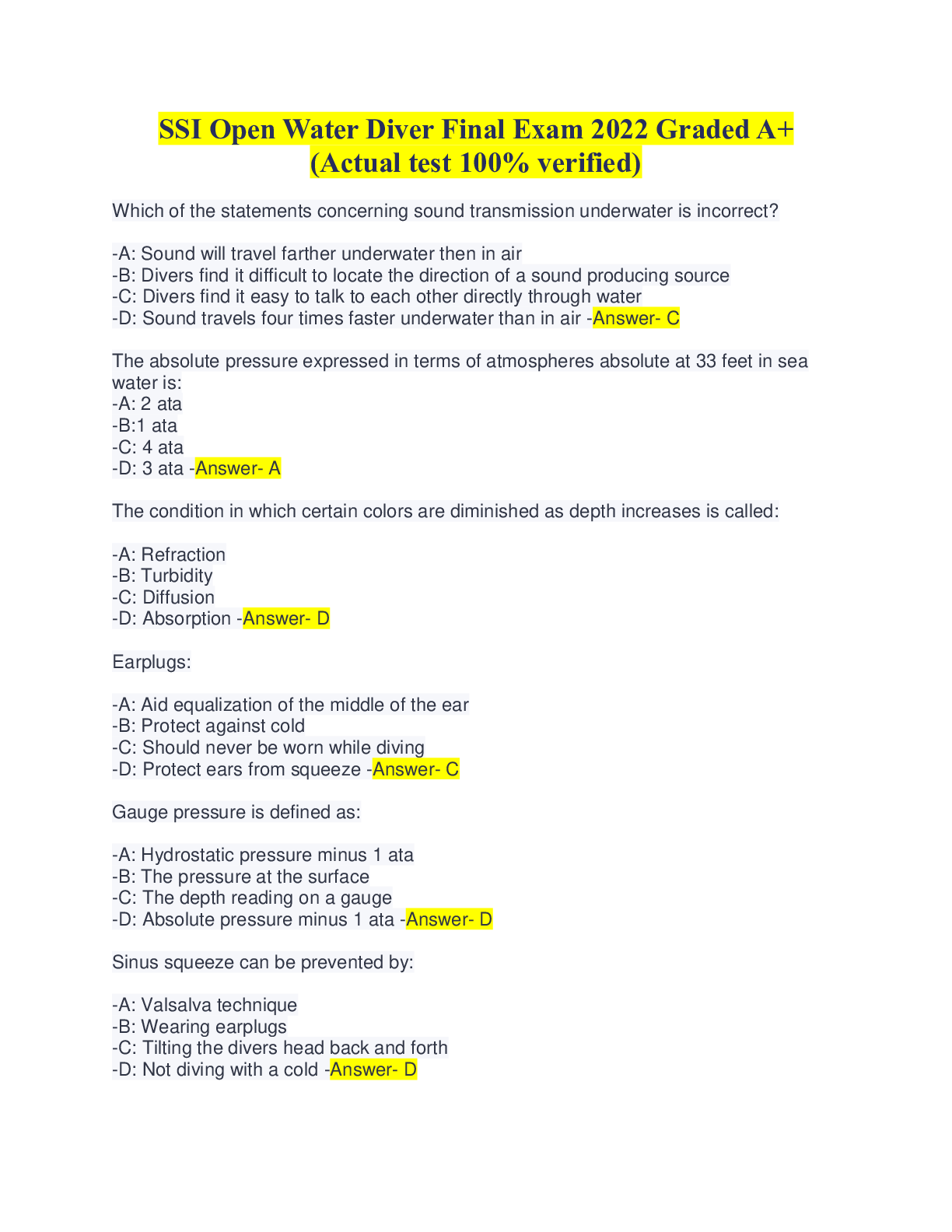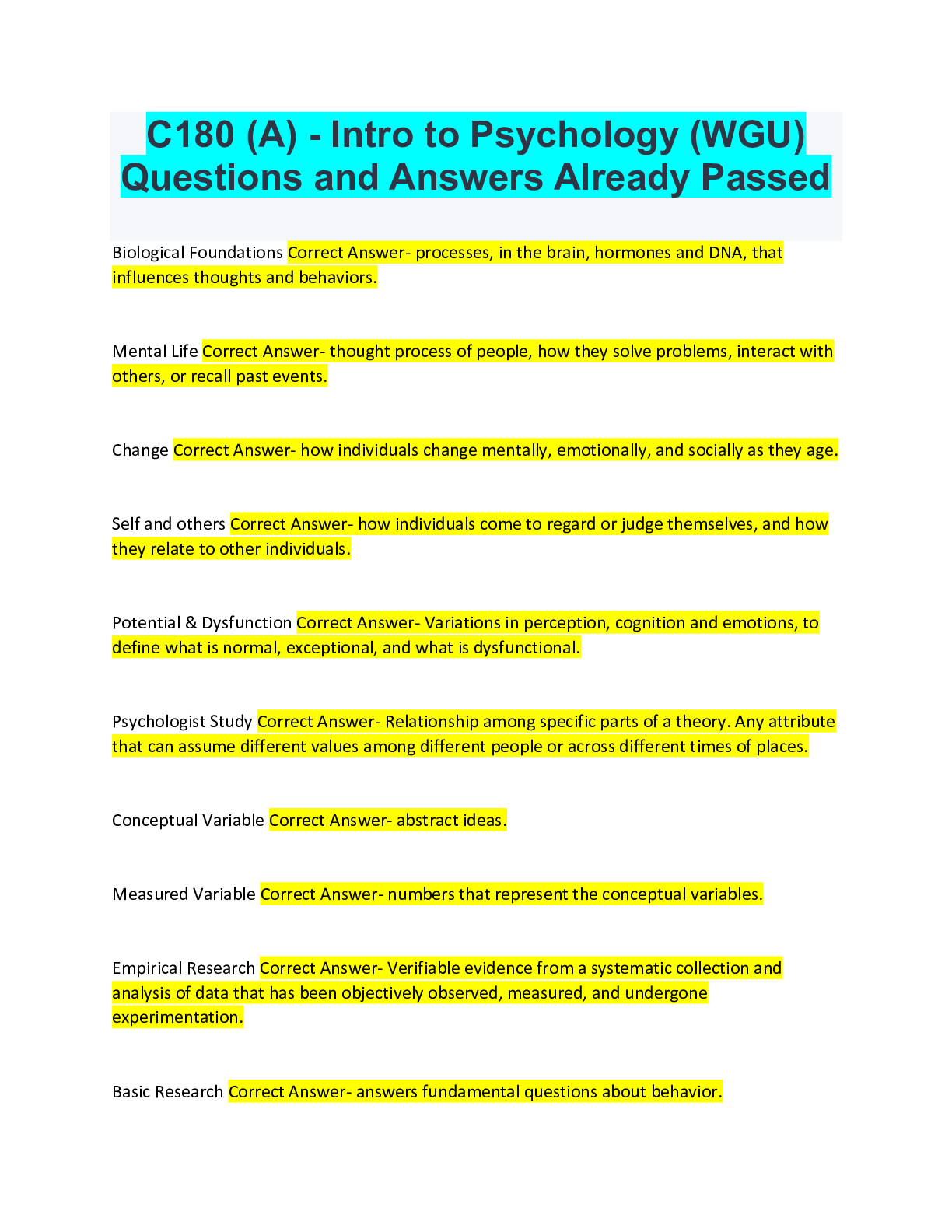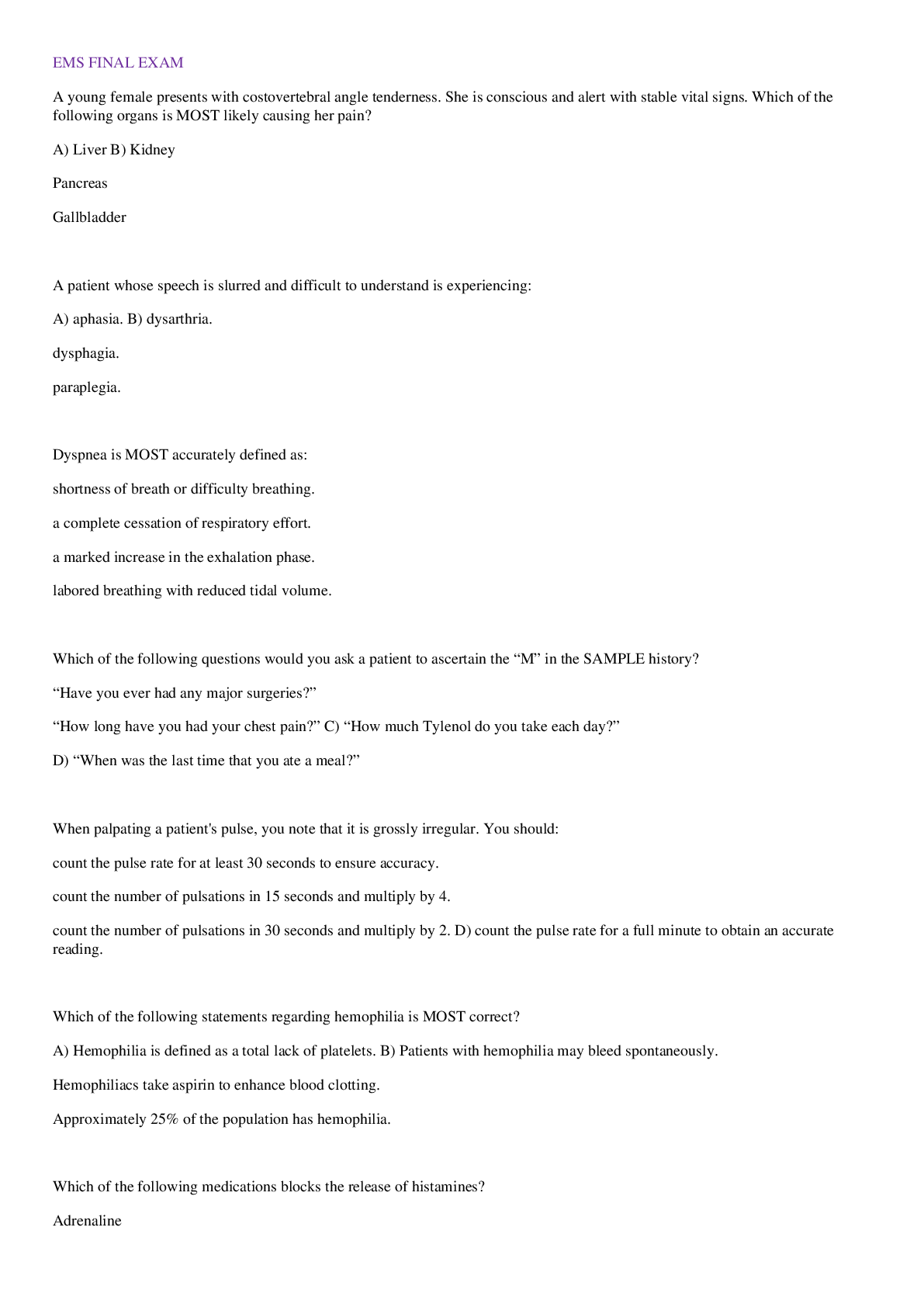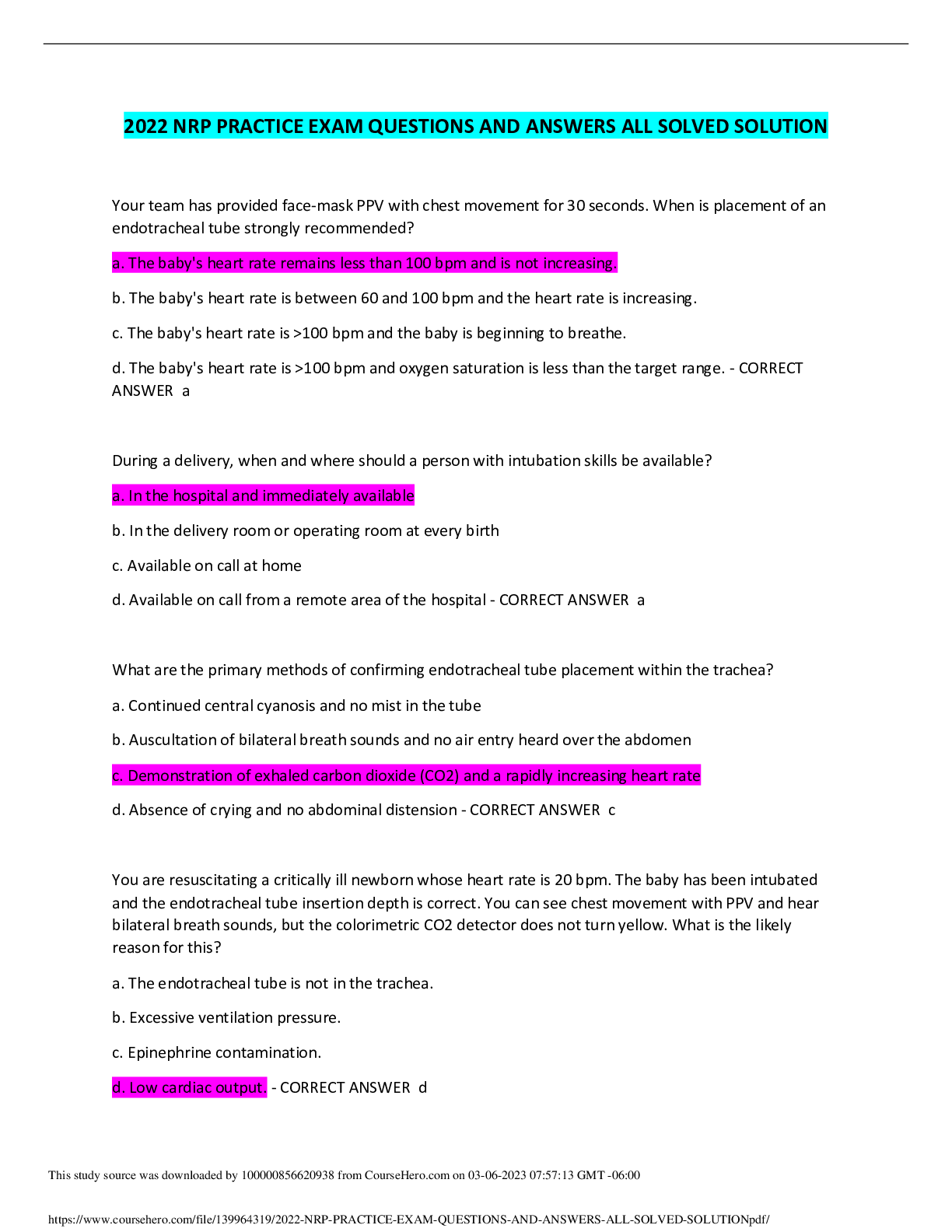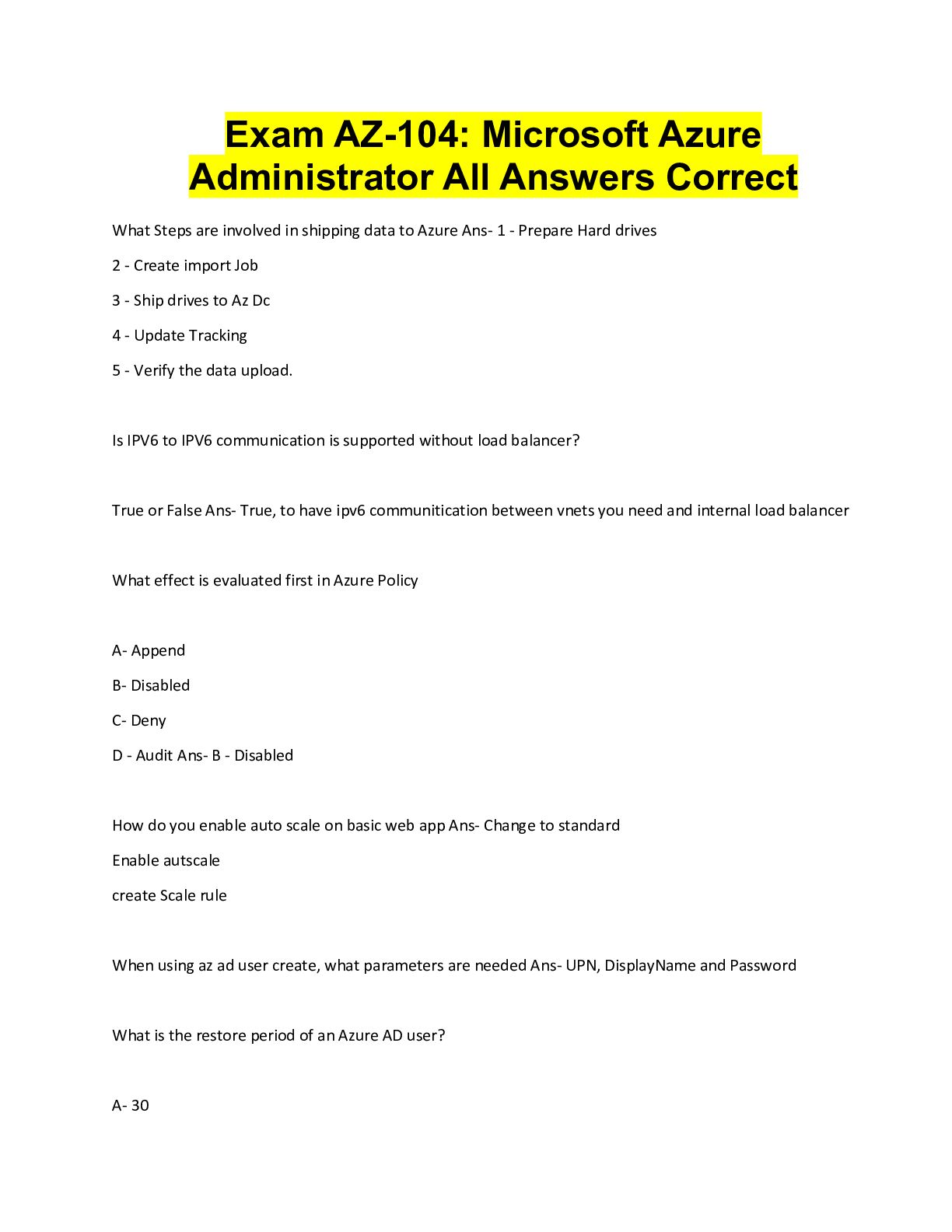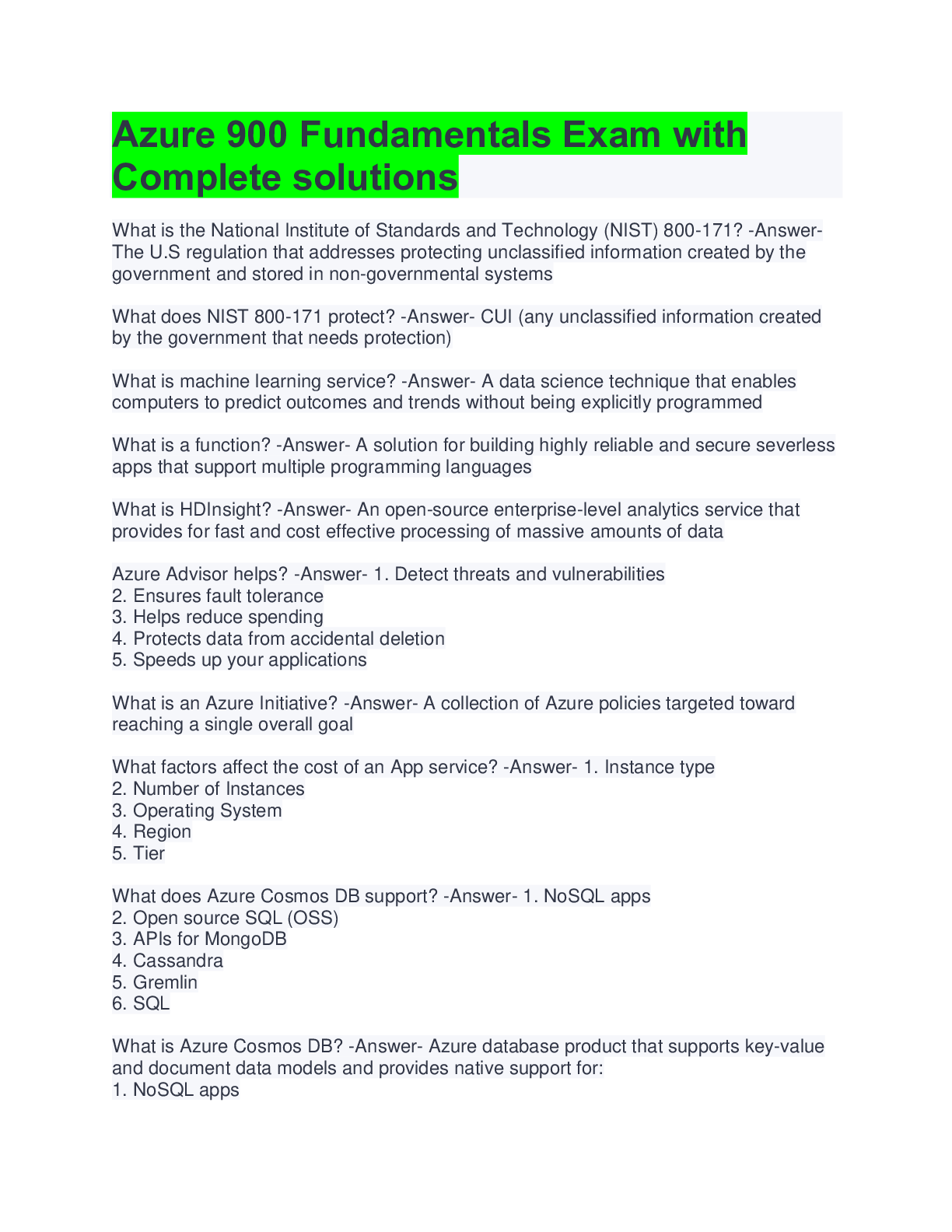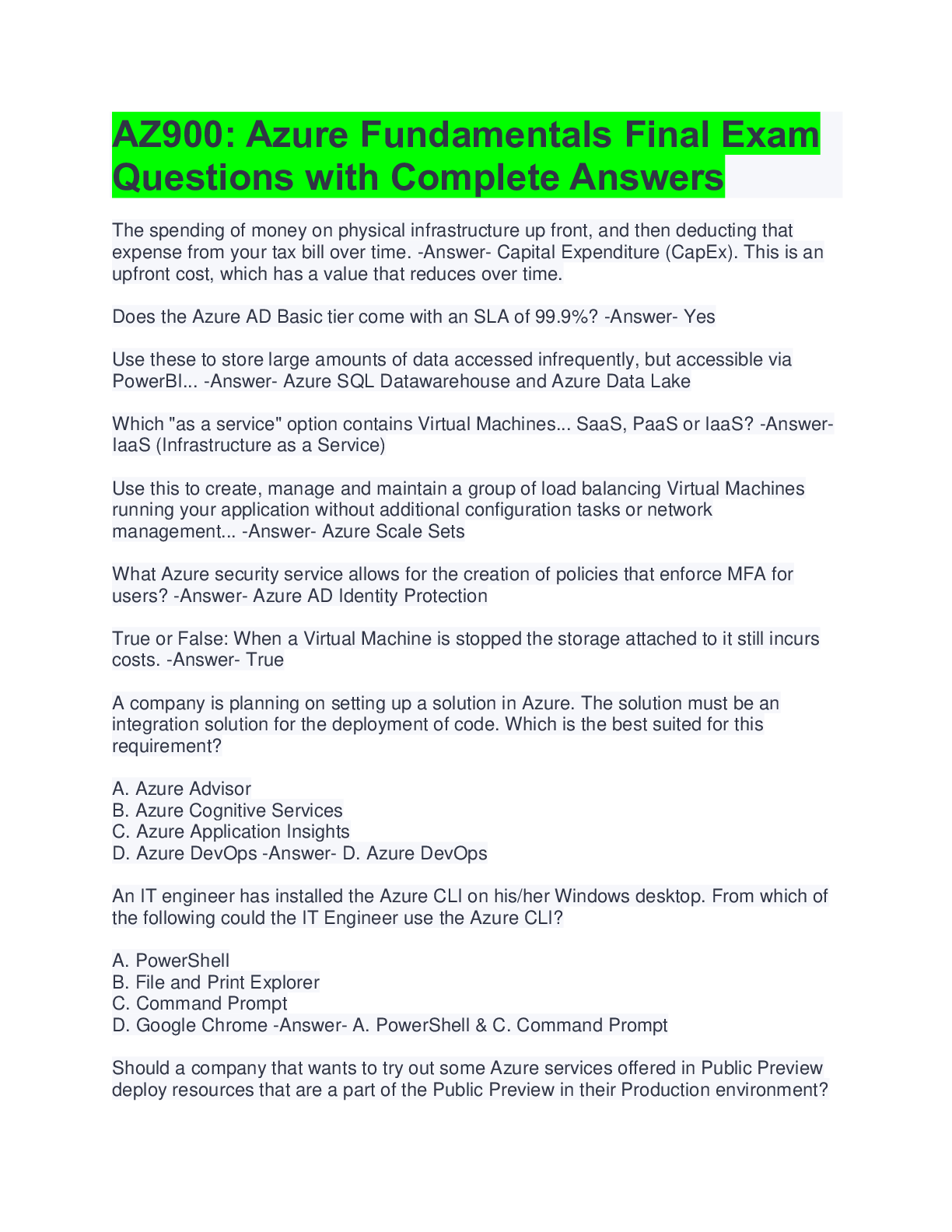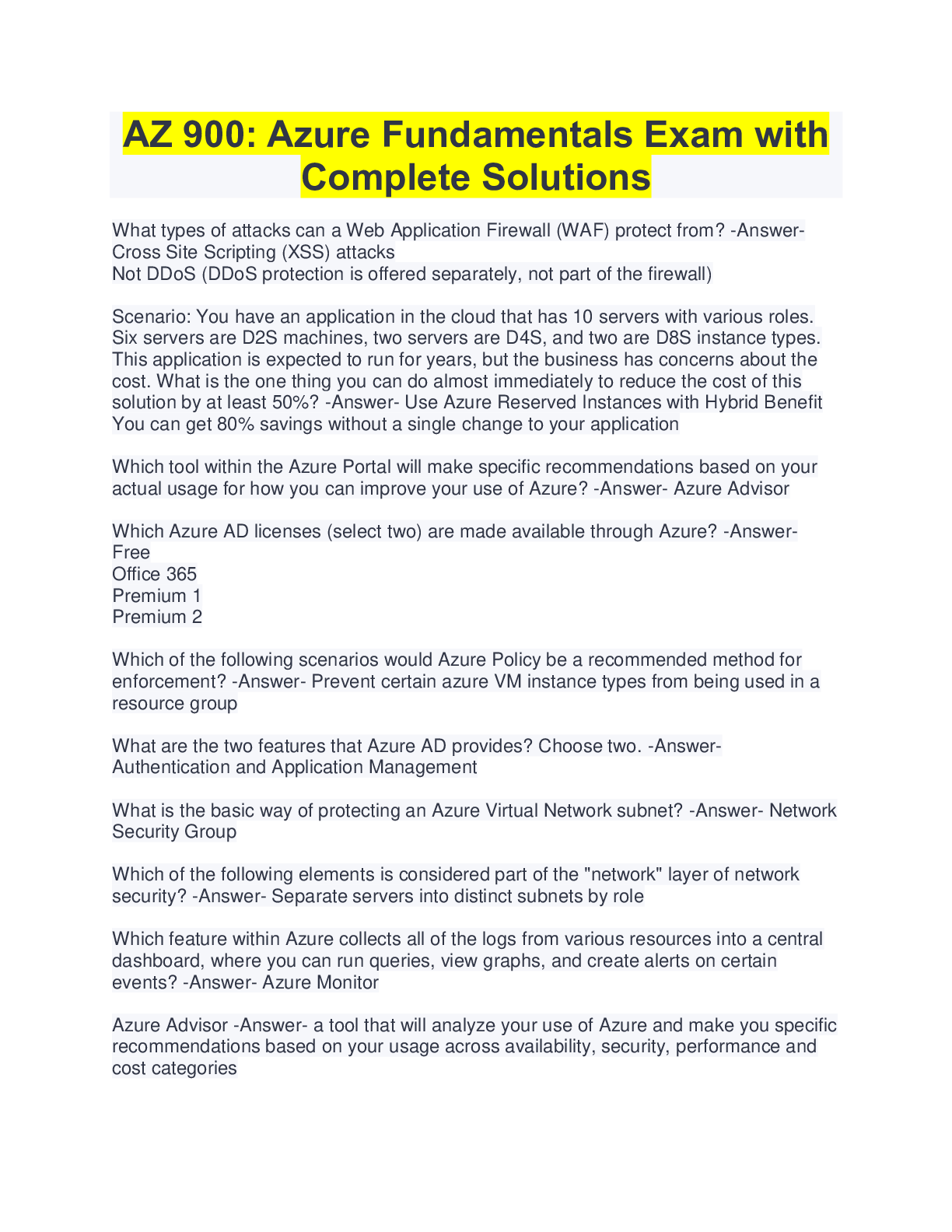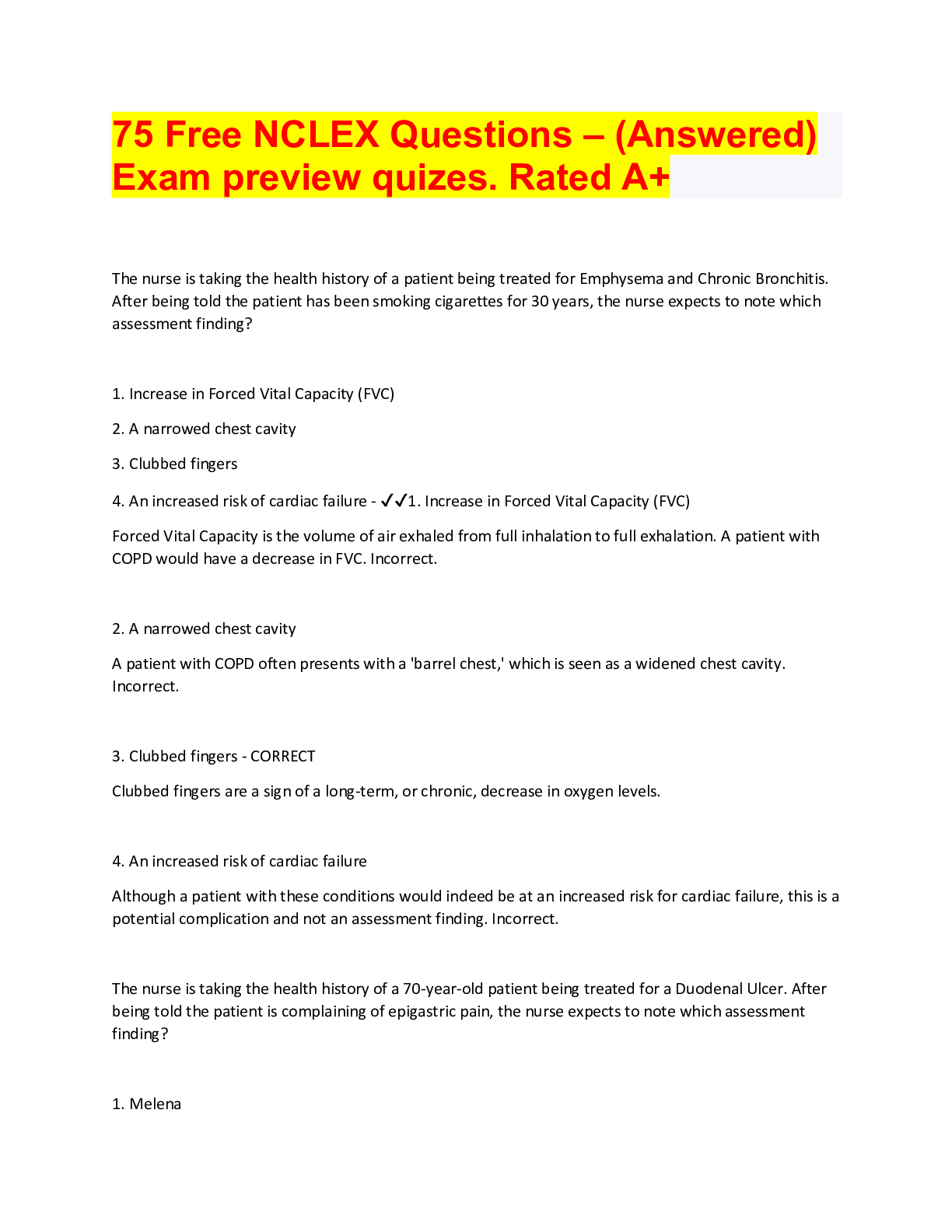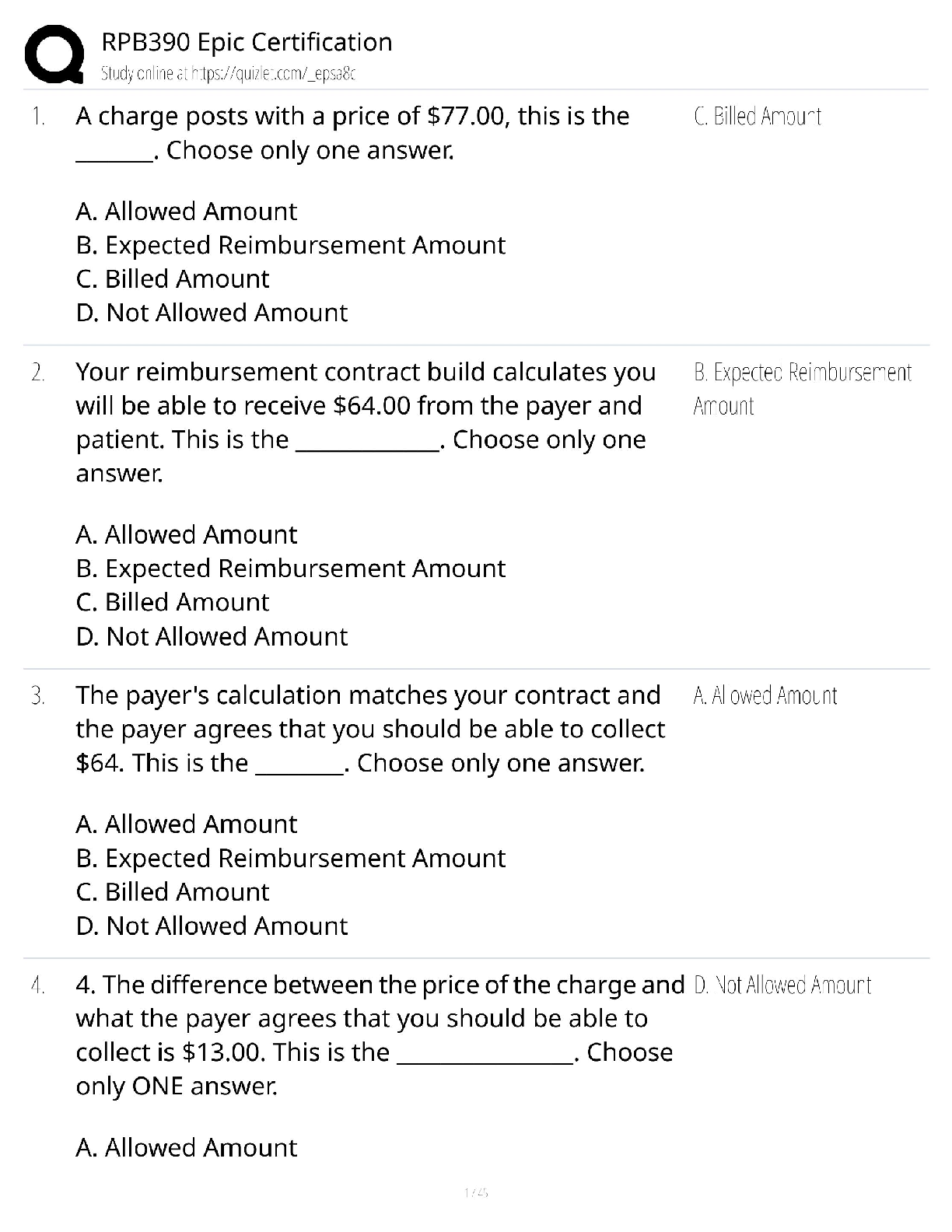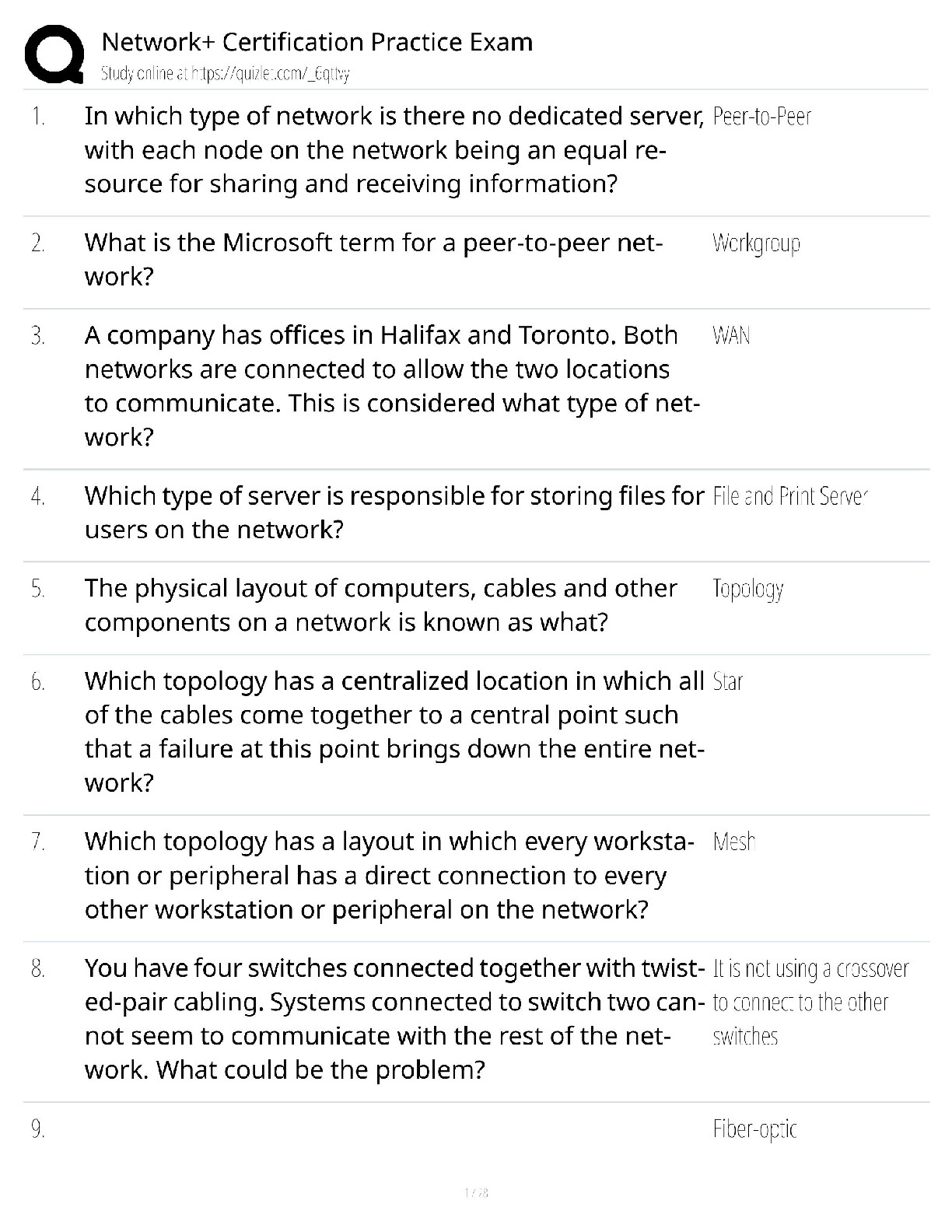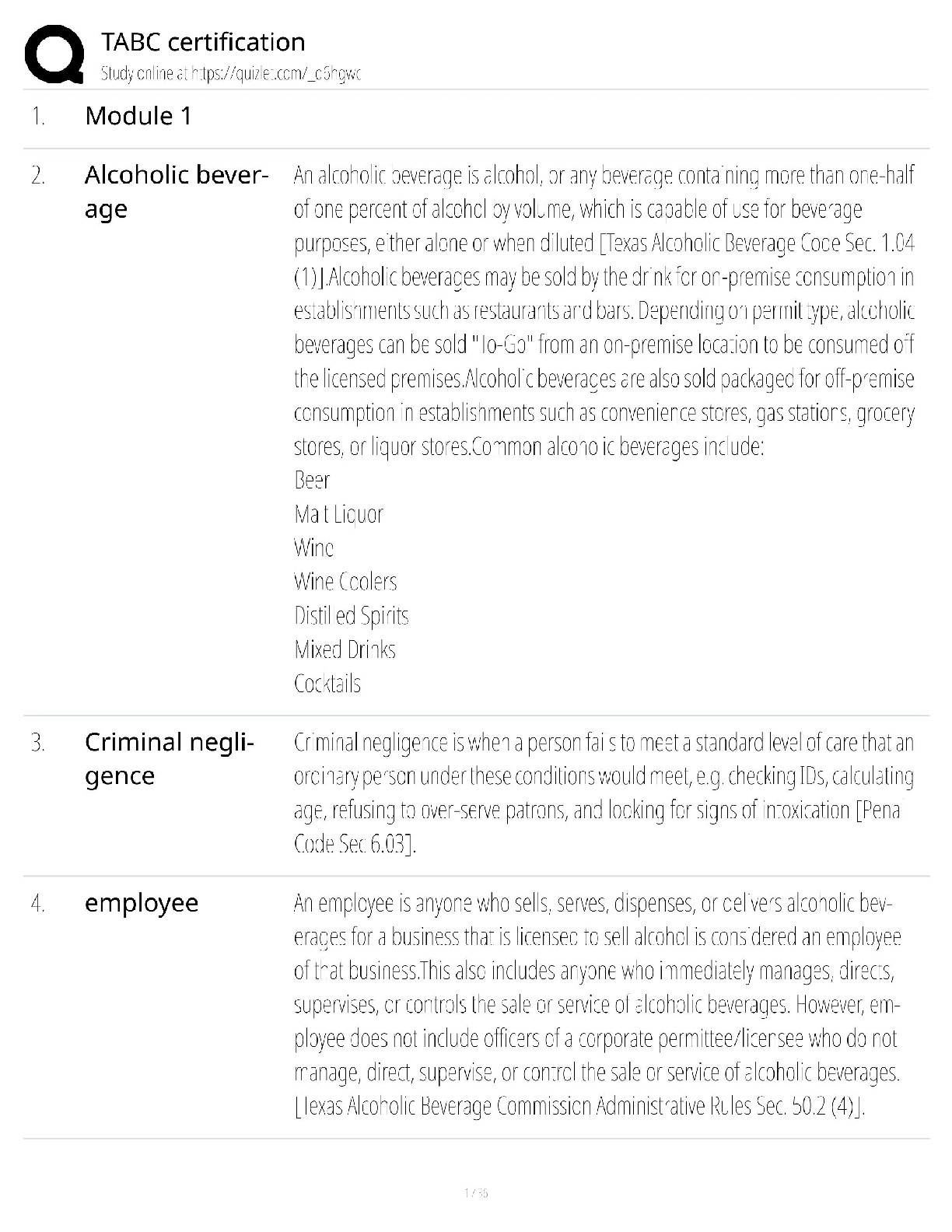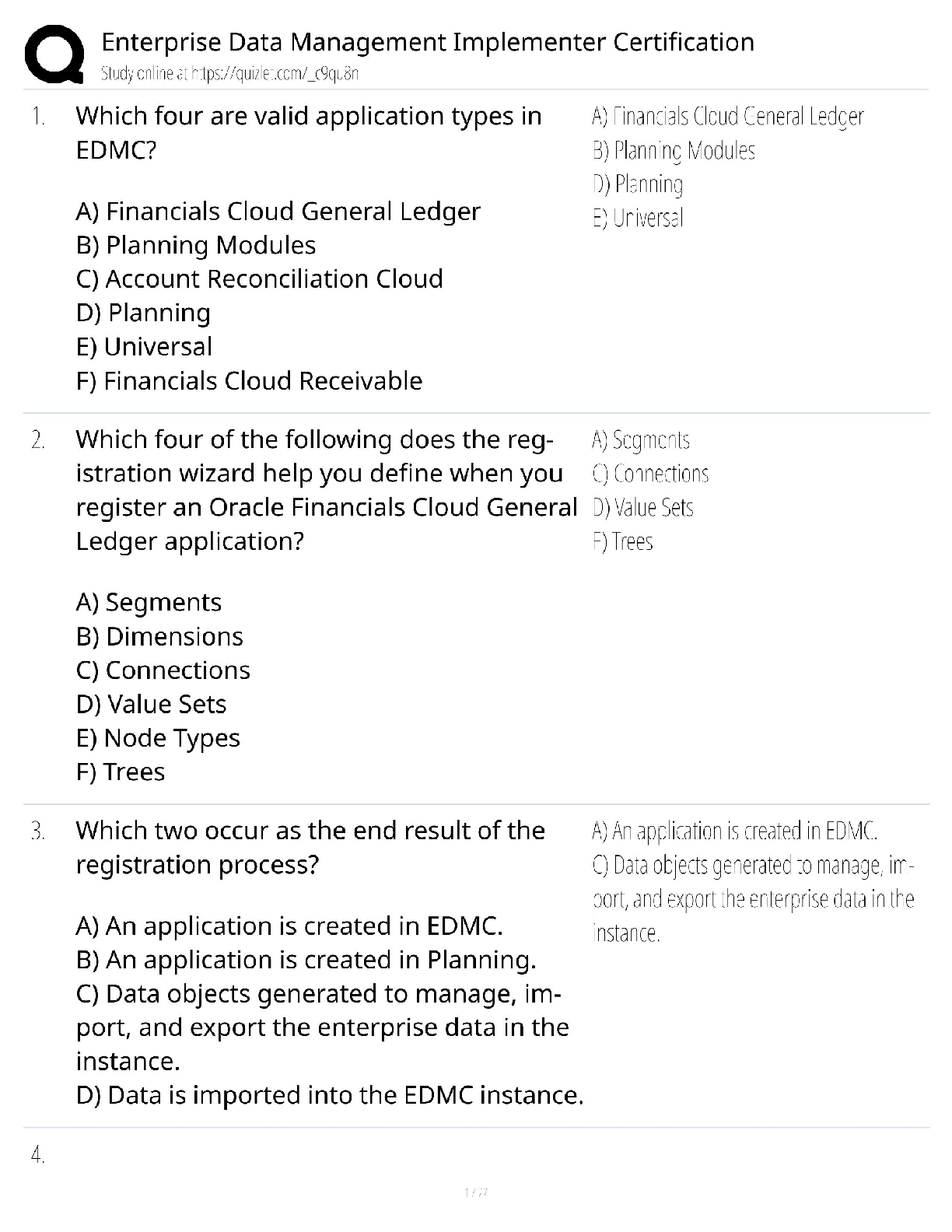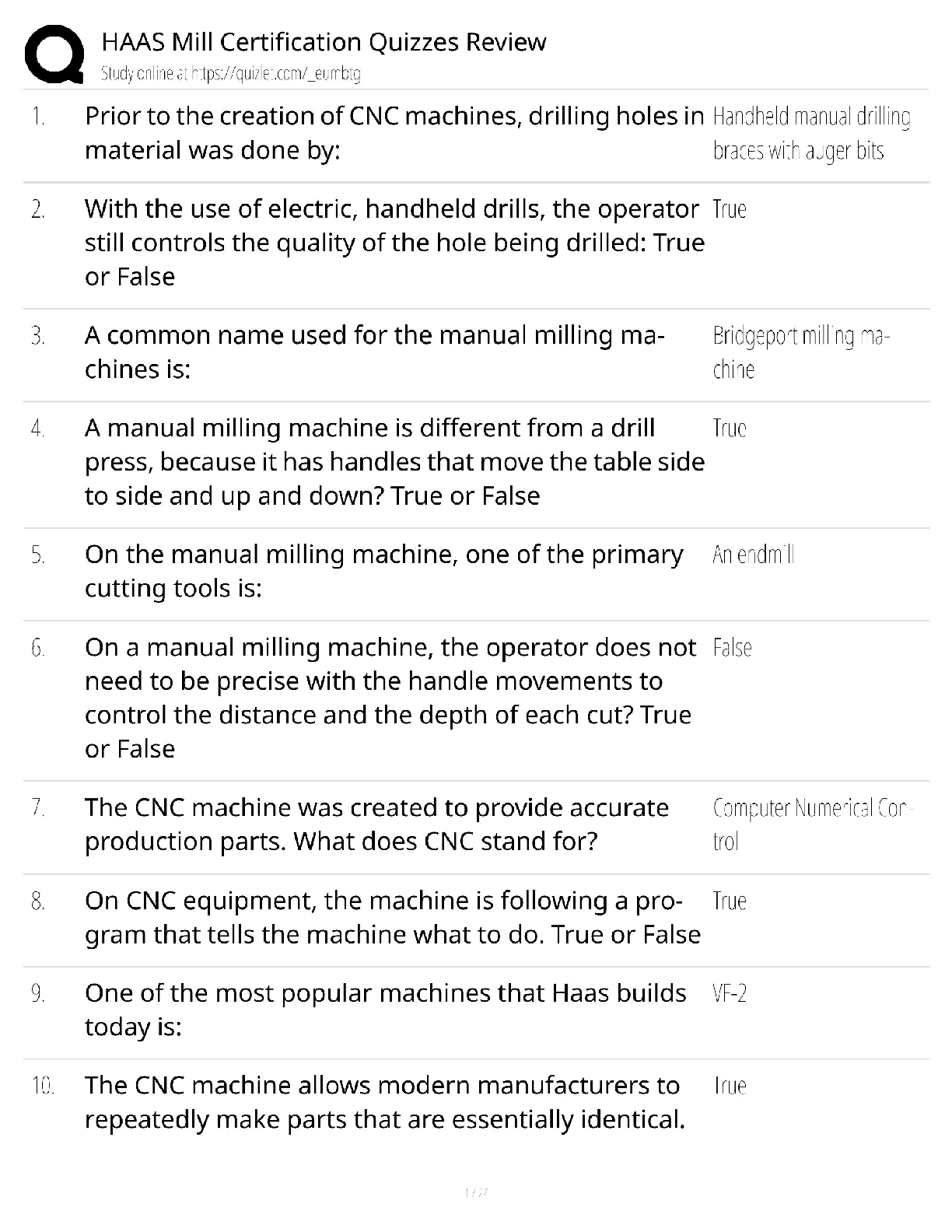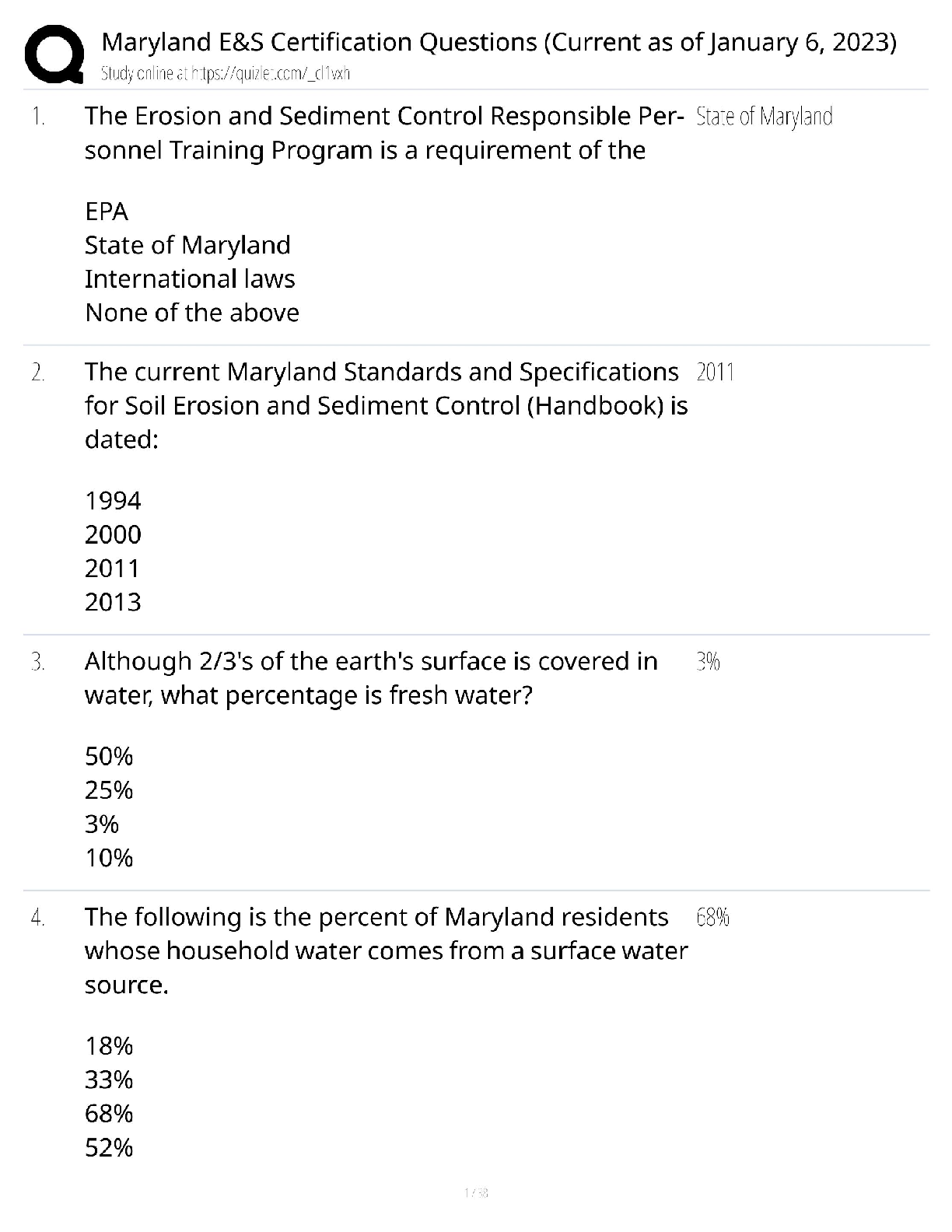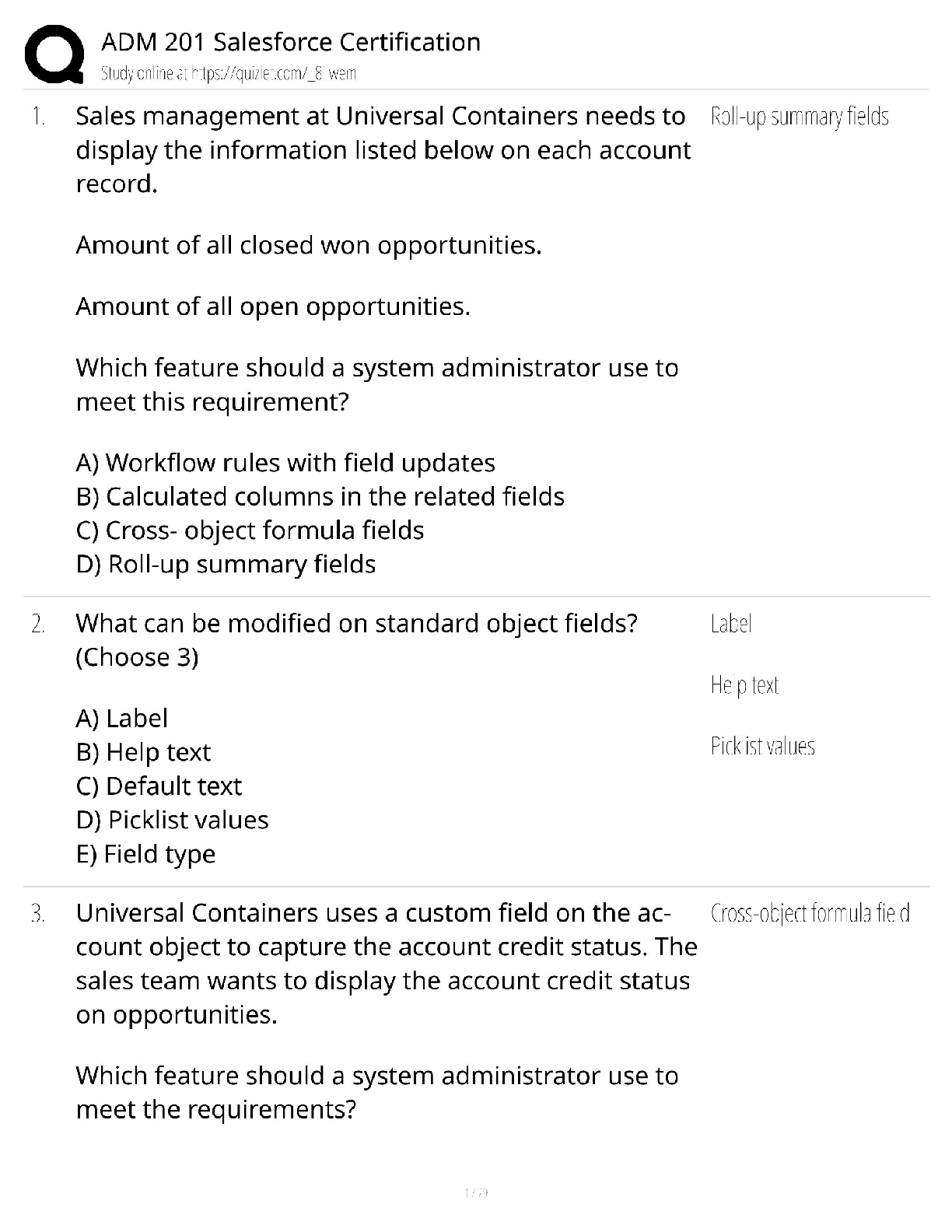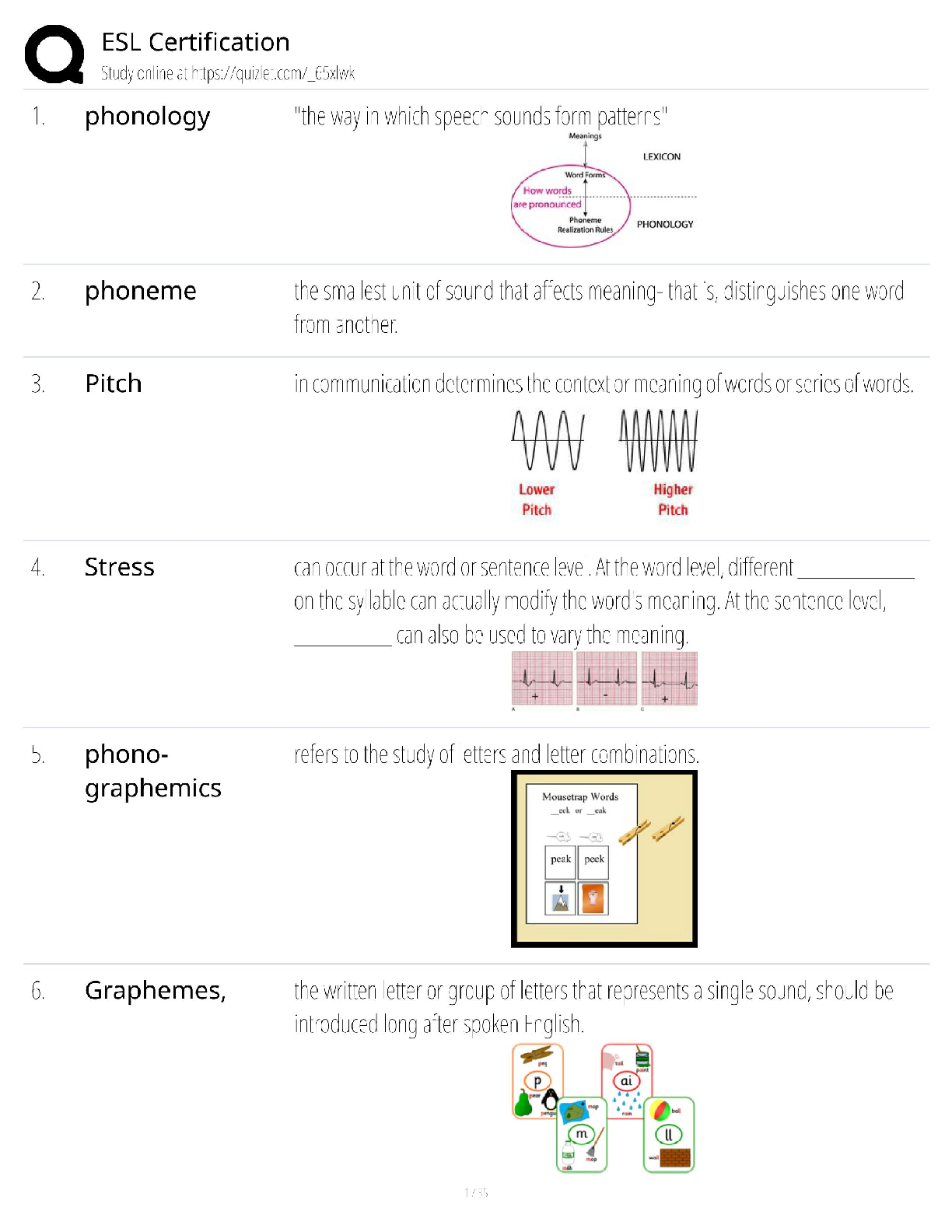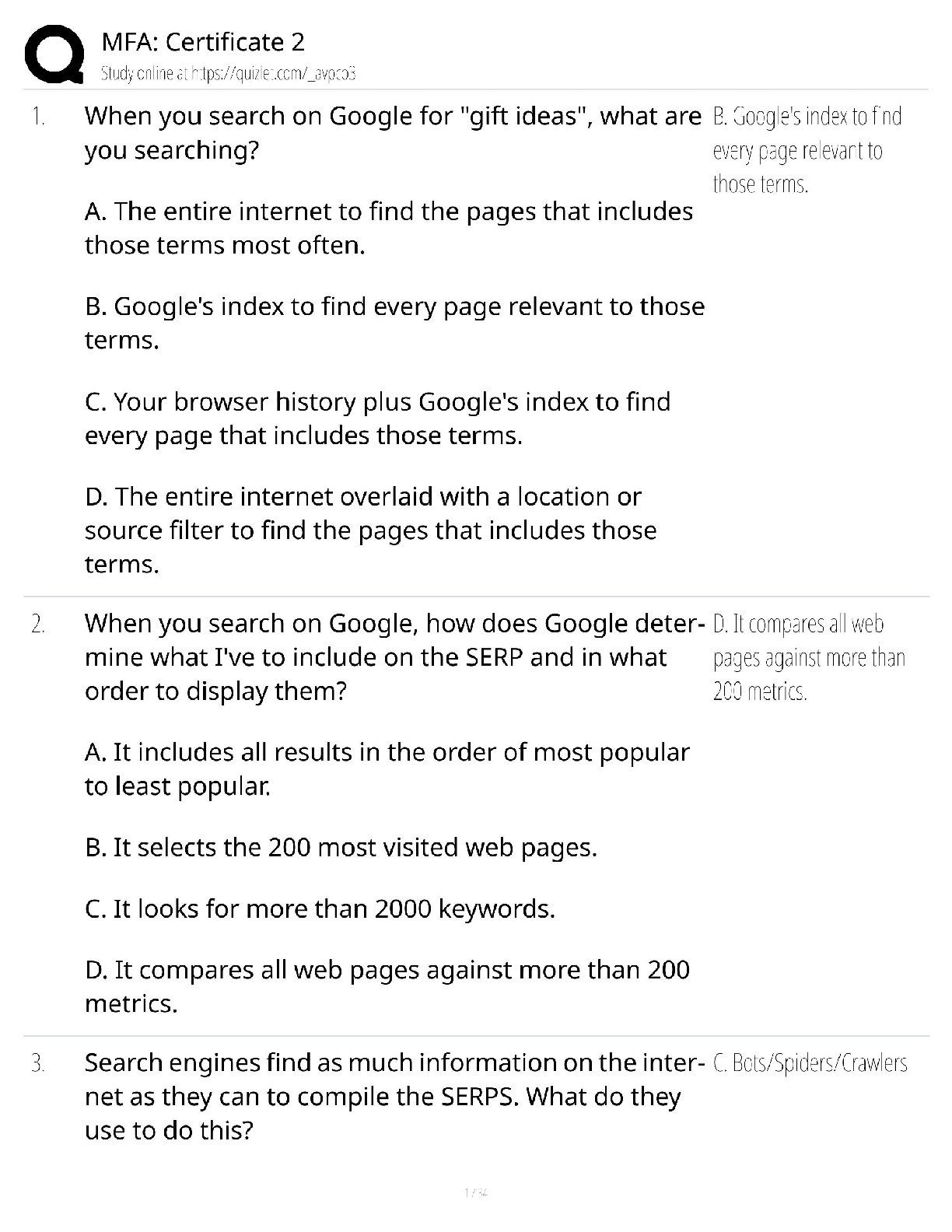*NURSING > QUESTIONS & ANSWERS > NR 509 Week 4 Quiz with complete solution (Latest 2022 quiz, graded A+) (All)
NR 509 Week 4 Quiz with complete solution (Latest 2022 quiz, graded A+)
Document Content and Description Below
NR 509 Week 4 Quiz with complete solution (Latest 2022 quiz, graded A+) The sac that surrounds and protects the heart is called the: a. Pericardium. b. Myocardium. c. Endocardium. d. Pleural spa ... ce. Correct Answer- a. Pericardium. The direction of blood flow through the heart is best described by which of these? a. Vena cava - right atrium - right ventricle - lungs - pulmonary artery - left atrium - left ventricle b. Right atrium - right ventricle - pulmonary artery - lungs - pulmonary vein - left atrium - left ventricle c. Aorta - right atrium - right ventricle - lungs - pulmonary vein - left atrium - left ventricle - vena cava d. Right atrium - right ventricle - pulmonary vein - lungs - pulmonary artery - left atrium - left ventricle Correct Answer- b. Right atrium - right ventricle - pulmonary artery - lungs - pulmonary vein - left atrium - left ventricle The nurse is reviewing the anatomy and physiologic functioning of the heart. Which statement best describes what is meant by atrial kick? a. The atria contract during systole and attempt to push against closed valves. b. Contraction of the atria at the beginning of diastole can be felt as a palpitation. c... Atrial kick is the pressure exerted against the atria as the ventricles contract during systole. d. The atria contract toward the end of diastole and push the remaining blood into the ventricles. Correct Answer- d. The atria contract toward the end of diastole and push the remaining blood into the ventricles. When listening to heart sounds, the nurse knows the valve closures that can be heard best at the base of the heart are: a. Mitral and tricuspid. b. Tricuspid and aortic. c. Aortic and pulmonic.d. Mitral and pulmonic. Correct Answer- c. Aortic and pulmonic. Which of these statements describes the closure of the valves in a normal cardiac cycle? a. The aortic valve closes slightly before the tricuspid valve. b. The pulmonic valve closes slightly before the aortic valve. c. The tricuspid valve closes slightly later than the mitral valve. d. Both the tricuspid and pulmonic valves close at the same time. Correct Answer- c. The tricuspid valve closes slightly later than the mitral valve. The component of the conduction system referred to as the pacemaker of the heart is the: a. Atrioventricular (AV) node. b. Sinoatrial (SA) node. c. Bundle of His. d. Bundle branches. Correct Answer- b. Sinoatrial (SA) node. The electrical stimulus of the cardiac cycle follows which sequence? a. AV node - SA node - bundle of His b. Bundle of His - AV node - SA node c. SA node - AV node - bundle of His - bundle branches d. AV node - SA node - bundle of His - bundle branches Correct Answer- d. AV node - SA node - bundle of His - bundle branches The findings from an assessment of a 70-year-old patient with swelling in his ankles include jugular venous pulsations 5 cm above the sternal angle when the head of his bed is elevated 45 degrees. The nurse knows that this finding indicates: a. Decreased fluid volume. b... Increased cardiac output. c. Narrowing of jugular veins. d. Elevated pressure related to heart failure. Correct Answer- d. Elevated pressure related to heart failure.When assessing a newborn infant who is 5 minutes old, the nurse knows which of these statements to be true? a. The left ventricle is larger and weighs more than the right ventricle. b. The circulation of a newborn is identical to that of an adult. c. Blood can flow into the left side of the heart through an opening in the atrial septum. d... The foramen ovale closes just minutes before birth, and the ductus arteriosus closes immediately after. Correct Answer- c. Blood can flow into the left side of the heart through an opening in the atrial septum. A 25-year-old woman in her fifth month of pregnancy has a blood pressure of 100/70 mm Hg. In reviewing her previous examination, the nurse notes that her blood pressure in her second month was 124/80 mm Hg. In evaluating this change, what does the nurse know to be true? a. This decline in blood pressure is the result of peripheral vasodilatation and is an expected change. b. Because of increased cardiac output, the blood pressure should be higher at this time. c. This change in blood pressure is not an expected finding because it means a decrease in cardiac output. d. This decline in blood pressure means a decrease in circulating blood volume, which is dangerous for the fetus. Correct Answer- a. This decline in blood pressure is the result of peripheral vasodilatation and is an expected change. In assessing a 70-year-old man, the nurse finds the following: blood pressure 140/100 mm Hg; heart rate 104 beats per minute and slightly irregular; and the split S2 heart sound. Which of these findings can be explained by expected hemodynamic changes related to age? a. Increase in resting heart rate b. Increase in systolic blood pressure c. Decrease in diastolic blood pressure d... Increase in diastolic blood pressure Correct Answer- b. Increase in systolic blood pressure A 45-year-old man is in the clinic for a routine physical examination. During the recording of his health history, the patient states that he has been having difficulty sleeping. "I'll be sleeping great, and then I wake up and feel like I can't get my breath." The nurse's best response to this would be: a. "When was your last electrocardiogram?"b. "It's probably because it's been so hot at night." c. "Do you have any history of problems with your heart?" d. "Have you had a recent sinus infection or upper respiratory infection?" Correct Answer- c. "Do you have any history of problems with your heart?" In assessing a patient's major risk factors for heart disease, which would the nurse want to include when taking a history? a. Family history, hypertension, stress, and age b. Personality type, high cholesterol, diabetes, and smoking c... Smoking, hypertension, obesity, diabetes, and high cholesterol d. Alcohol consumption, obesity, diabetes, stress, and high cholesterol Correct Answer- c... Smoking, hypertension, obesity, diabetes, and high cholesterol The mother of a 3-month-old infant states that her baby has not been gaining weight. With further questioning, the nurse finds that the infant falls asleep after nursing and wakes up after a short time, hungry again. What other information would the nurse want to have? a. Infant's sleeping position b. Sibling history of eating disorders c. Amount of background noise when eating d. Presence of dyspnea or diaphoresis when sucking Correct Answer- d. Presence of dyspnea or diaphoresis when sucking In assessing the carotid arteries of an older patient with cardiovascular disease, the nurse would: a... Palpate the artery in the upper one third of the neck. b. Listen with the bell of the stethoscope to assess for bruits. c... Simultaneously palpate both arteries to compare amplitude. d. Instruct the patient to take slow deep breaths during auscultation. Correct Answer- b. Listen with the bell of the stethoscope to assess for bruits. During an assessment of a 68-year-old man with a recent onset of right-sided weakness, the nurse hears a blowing, swishing sound with the bell of the stethoscope over the left carotid artery. This finding would indicate:a. Valvular disorder. b. Blood flow turbulence. c. Fluid volume overload. d. Ventricular hypertrophy. Correct Answer- b. Blood flow turbulence. [Show More]
Last updated: 3 years ago
Preview 1 out of 21 pages

Buy this document to get the full access instantly
Instant Download Access after purchase
Buy NowInstant download
We Accept:

Also available in bundle (1)
Click Below to Access Bundle(s)

All NR 509 week quizzes and exam
NR 509 Week 4 Quiz with complete solution (Latest 2022 quiz, graded A+) NR 509 Week 3 Quiz with complete solution (Real quiz 100% correct latest update 2021/2022) NR 509 week 2 Quiz questions an...
By Excel 3 years ago
$30
12
Reviews( 0 )
$8.00
Can't find what you want? Try our AI powered Search
Document information
Connected school, study & course
About the document
Uploaded On
Jul 13, 2022
Number of pages
21
Written in
All
Additional information
This document has been written for:
Uploaded
Jul 13, 2022
Downloads
0
Views
307

